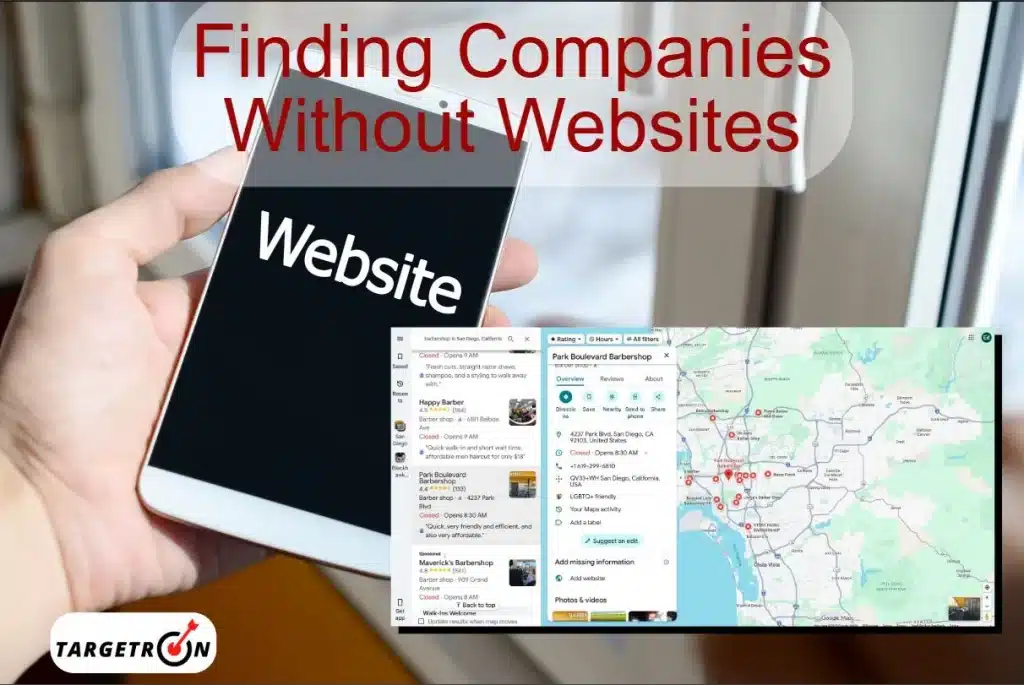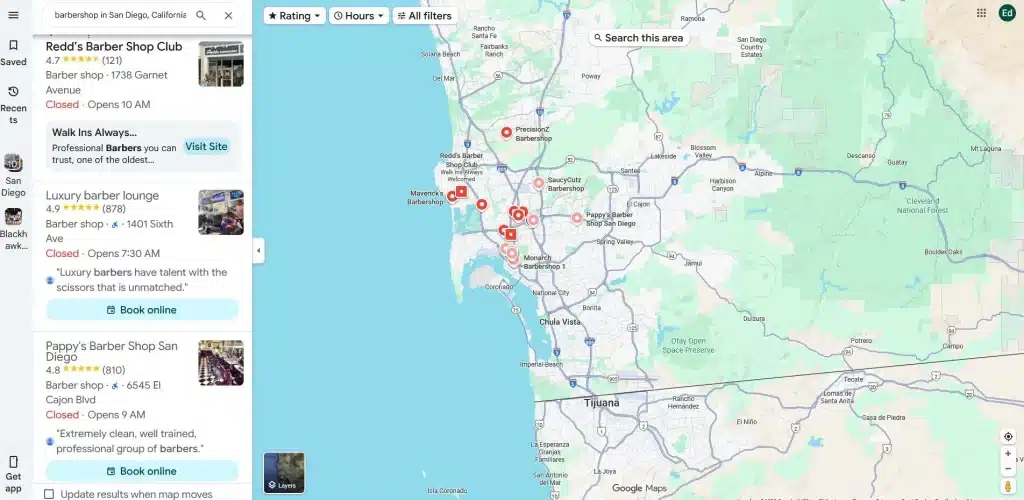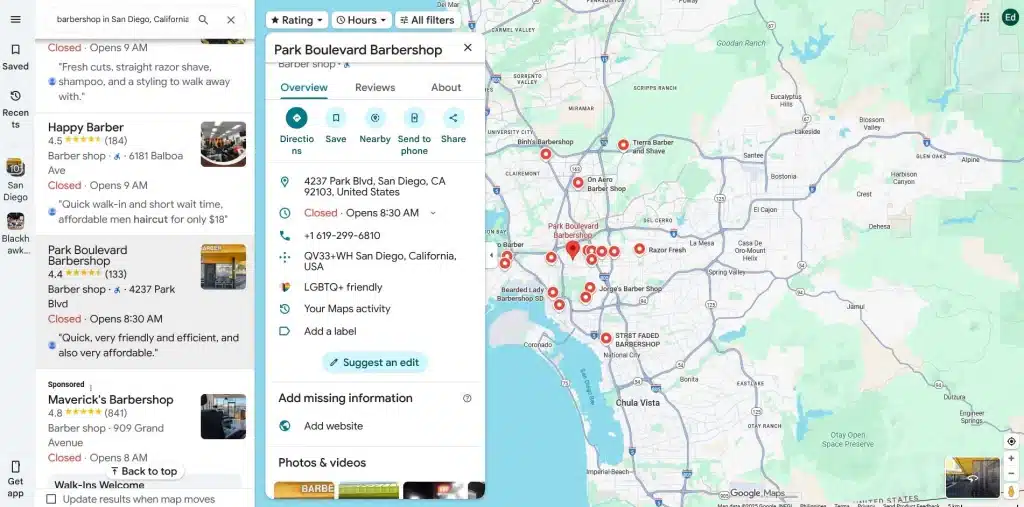Don't wait for a call—chat with our sales team now via WhatsApp!
How to Find Businesses Without Websites Using Google Maps
Table of Contents
Introduction to Finding Businesses Without Websites
If you are tired of endless calls and a generic lead list to find businesses without a website but without any results, you will probably be surprised if I told you that you’re already using the tool to find them.
Every year, 24% of small businesses still don’t have a website, which could translate into millions of potential clients. What if you could easily find these businesses and offer them the exact solution you need?
It’s not some expensive software or a hidden database. It’s Google Maps.
Finding businesses without websites using Google Maps is very simple. All you have to do is search for local service providers, such as “plumbers,” “electricians,” or “landscapers,” in a specific area.
Google will show you a list of businesses, and many of these listings will either have no website listed at all or they only post their social media page.
This guide will show you a simple, 5-step process to find a steady stream of businesses that desperately need a website. If you’re a business owner asking, “Can I really run a business without a website?” this article is for you, too.
Why Google Maps is the Ultimate Client Finder
Business without a website is in deep trouble. They are losing credibility, missing out on valuable leads, and are at the mercy of their online reviews.
But how do you find these specific businesses? How do you move past generic lists and find the ones that desperately need your help?
It’s Google Maps.
It’s a lead generation tool hiding in plain sight. It gives you a direct, visual way to find businesses that have a clear, immediate problem you can solve.
Why a Business Without a Website Is a Growing Vulnerability
So, you found a company with no online presence. That’s a good thing right?
Absolutely. Because when a business doesn’t have a website, they’re not just missing out on a few customers, they’re missing out nearly on all of them:
- Credibility & Trust: A modern business without a website often looks unprofessional or even illegitimate. A Zippia study shows that 81% of shoppers choose to research a business online before making a purchase.
- Missed Leads: How do customers find a business today? They Google it or they use AI search. If there’s no website, there’s no way you can capture that inbound traffic.
- Poor Online Reputation: Many businesses without a website still show up on Google Maps with reviews. And if those reviews are bad, they have no place to “correct the record.”
B2B Local Leads Directory
Build your list of ideal customers for cold outreach.
The Google Maps Step-by-Step Guide to Finding Companies Without a Website
This is the step-by-step guide you’ve been waiting for. Simply follow these five steps to quickly build a list of perfect prospects.
Step 1: Start with a Targeted Search
Don’t just type “businesses near me.” Think like a customer, the more specific you are, the faster you’ll find the right leads. Here are some samples
- plumbers near me
- barbershop in [your city]
- dentist [your town] reviews
- auto repair shop [your zip code]
You can also look for businesses with a physical location. These are the ones who are most likely to rely on foot traffic and Google searches, which means they have the most to gain from a website.
Step 2: The Website-Missing Filter
Look at the listings on the Google Maps results page; businesses with a website will typically have a dedicated link or a Globe icon. If it’s missing, you need to go to each listing and select the overview.
While some listings may show a website link directly on the list view, others may not. The full business profile provides the most complete and accurate information.
Why you should take an extra step in finding businesses without websites. First, Google’s listing display can change based on screen size and other factors. Second, a business may not have a traditional website but might list a social media page in its profile. Third, there’s an option for providing booking links. This option is also a key indicator if it’s the only digital presence they have, or it’s in addition to a traditional website.
Step 3: The Review Audit
Not all businesses without a website are the same. The best ones to target are those with a low star rating.
Why?
- It’s a huge pain point: They have a problem they know about and can’t easily fix. A bad reputation is a serious issue that they are probably worried about.
- You can offer a real solution: You can pitch them a new website as a way to “start fresh” and improve their online reputation. A professional website can get more positive reviews and gain control of its brand identity. Look for businesses with a star rating below 4.0. You’re not just selling a service, but you’re already solving a real problem for them.
Step 4: Extract the Data
Now, go through your filtered list and get the key information you’ll need for your outreach. Simply open a spreadsheet and record the following for each business:
- Business Name
- Address
- Phone Number
- Observations (e.g., “3.5 stars, 15 reviews, no website listed”}
Step 5: The "Right Fit" Checklist
Before you reach out, quickly check a few things to make sure the lead is a good fit for your business. This step helps you focus on high-quality prospects:
- Are they a local, brick-and-mortar business? (e.g., a plumber, dentist, or restaurant, not a large corporation).
- Does their business type match your services? (e.g., they need a simple business site, and you build local business sites).
- Do they seem professional? Do they have a clear name and a professional-looking logo, even if they don’t have a website? This is a good sign that they may be willing to invest in their business.
The Bonus Section: Other Free Ways to Find Clients
While Google Maps is your primary tool for finding businesses that need a website, it’s not the only way to find leads.
Here are a few other effective methods to add to your process:
- Scour Local Directories
- Websites like Yelp, Yellow Pages, and local business associations are great places to find businesses without websites.
- This could be your second-tier search; some businesses often have a profile but haven’t taken the next step to create their own website.
- You can search for your target niche on these directories. Look for listings that have no website link or only link to a social media page, which is a clear signal that they are prospects.
- Use Reddit
- The front page of the internet, Reddit, is where some businesses look for help. Just join sub-reddits like r/smallbusiness, r/Entrepreneur, and r/web_design.
- Search for discussions about “website help,” “how to build a website,” or “website advice.” When you find them, don’t pitch your service.
- Instead, provide a genuinely helpful answer and build your reputation. Later on, you can offer your service in a more natural way.
- Automate Your Search
- If you want to find hundreds of leads in a fraction of the time, you can use lead generation tools or a B2B sales intelligence platform. While these often come with a cost, they can save you hours of manual searching.
- Use tools like Targetron, which are designed to automatically scan Google Maps listings and generate a list of businesses without websites.
- You can filter by industry, location, and even review score to get a massive, targeted list of prospects in minutes.
B2B Local Leads Directory
Build your list of ideal customers for cold outreach.
How to Pitch to Businesses Without Websites
You’ve done your hard work of building your list of qualified leads. Now, it’s time to take the next step. The key here is not to be pushy, but you need to be helpful.
Step 1: Don’t Cold Call
Cold calls are intrusive and easy for business owners to dismiss. Instead, send a simple, direct mail or a personalized message through their business’s social media page. Your goal is to get a conversation starter, and not to make a sale.
Step 2: Lead with Empathy
Your first sentence should show that you’ve done some research. Acknowledge their success first, before you bring up their problem.
Example opening lines:
I was searching for a [their business type] in [their city] and found your business. It looks like you have a great reputation.
Step 3: Highlight the Problem
Once you’ve built a little rapport, gently point out the missed opportunities. Do this in a way that shows you’re on their side, not just trying to sell them something.
Example language:
I noticed you don’t have a website listed like your competitor, [competitor name], which means you’re missing out on new customers who search online for businesses like yours. [competitor name] has a website that helps them bring in new customers every day. A website could do the same for you.
Step 4: Present the Solution
Finally, explain how a professional website will help them get more leads, improve their reputation, and grow their business. Focus on benefits, not just features.
- Credibility: A website makes your business look professional and trustworthy.
- More Leads: It will help them capture new customers who are searching for their services online like Google or ChatGPT.
- Reputation Management: They’ll have a place to “correct the record” and show off their best testimonials.
- Constant Sales: A website works for them 24/7, even when they’re closed.
Conclusion
You now have the complete, step-by-step guide to find businesses that desperately need a website, using a tool you already have, which is Google Maps.
No more chasing useless leads and no more cold calls that get you nowhere. I’ve shown you how to spot the “growing vulnerabilities,” how to find the perfect leads with a simple review audit, and how to reach out in a way that gets a response.
The businesses that need your help are out there. Your next client is waiting.
The only thing left to do is take the first step. Open a new tab, go to Google Maps, and run your first targeted search. The future of your business is just a few clicks away.
P.S. If you want to skip the manual work and get a list of hundreds of qualified leads in minutes, you can use a B2B sales intelligence platform like Targetron.
FAQ
Most frequent questions and answers
1. Go to the Targetron Platform.
2. Select categories and locations.
3. Click search, and export to get the data.
Local business directory is a list of businesses within a particular niche, category, or industry.
B2B data is the information used to help sales and marketing. This includes a database of company details, emails, phones, social links, and other useful information.
- Login with your Targetron account.
- Open the Business Directory.
- Select Industry and Location.
- Open Advanced Filters and Select Business Status (Temporarily/Permanently Closed)


